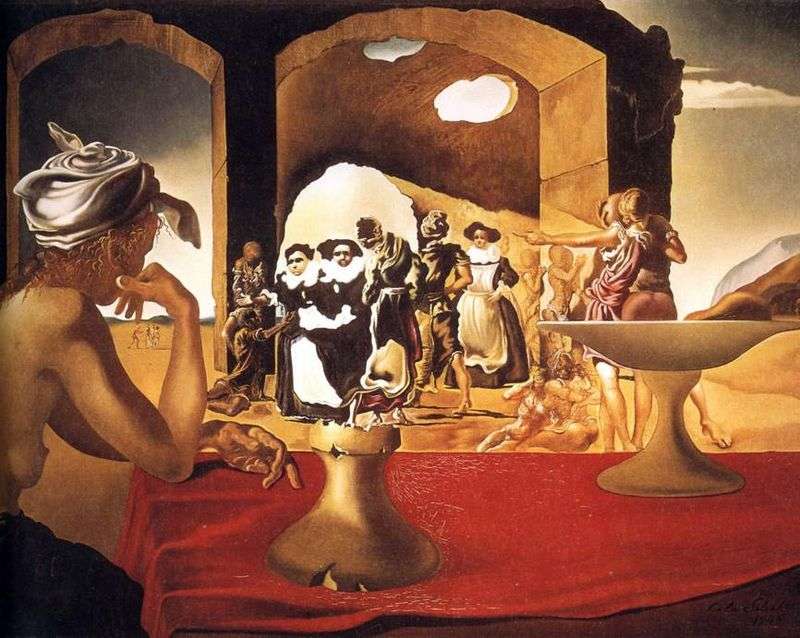
In this picture, perhaps, everything is an illusion, with the exception of the Gal at the table. She is naked to the waist; her head is carelessly tied with a turban. Small tiny tresses break out from under the turban. Pose relaxed and slightly tired. Gala supports the head with his hand, the elbow rests on the surface of the table, laid with a red tablecloth. She sits half-turned to the viewer and watches the unfolding action before her.
The scenery for this scene is a desert landscape characteristic of Dali’s paintings with hills on the horizon. On the middle plan, the artist placed a double arch. In the opening of one arch you can see the horizon, the other in all its glory demonstrates the possibilities of the paranoid-critical method of Dali.
The artist plays with the viewer, juggling with double images. One can imagine that the arch does not have a through opening, but is only a niche. Such arches in architecture are called blind. The back wall of it is cut by several holes of irregular shape, through which the sky can be seen. A look from a different angle and under other illumination allows you to see in the same construction a through arch, and behind it – a mountain slope and a sky with clouds.
The fruit bowl on the table is also not as simple as it might seem at first glance. Actually, every look thrown on this canvas, makes you want to look again and check yourself. Pear and plum are in the vase? Or is it empty, and the pear is the hillside in the distance, and the sink is the buttocks of the human figure on the middle ground?
But the apotheosis of hoax – the bust of Voltaire facing Gala. He accurately repeats the features of the famous work of the sculptor Houdon. But at the same time the bust is illusory and formed by two ladies standing out from the crowd in old Flemish suits with magnificent collars. Blinking or moving your eyes, we will see on the table only an empty stand.
Dali himself explained this picture as an attempt to “swap the normal with the abnormal.” Voltaire for him was an allegory of skepticism and wicked irony, the slave market personified the brutal fuss of everyday life, and the presence of Gal made the bust of the philosopher disappear with all that he personified, and rescued the artist from the slavery of vanity and sarcasm.
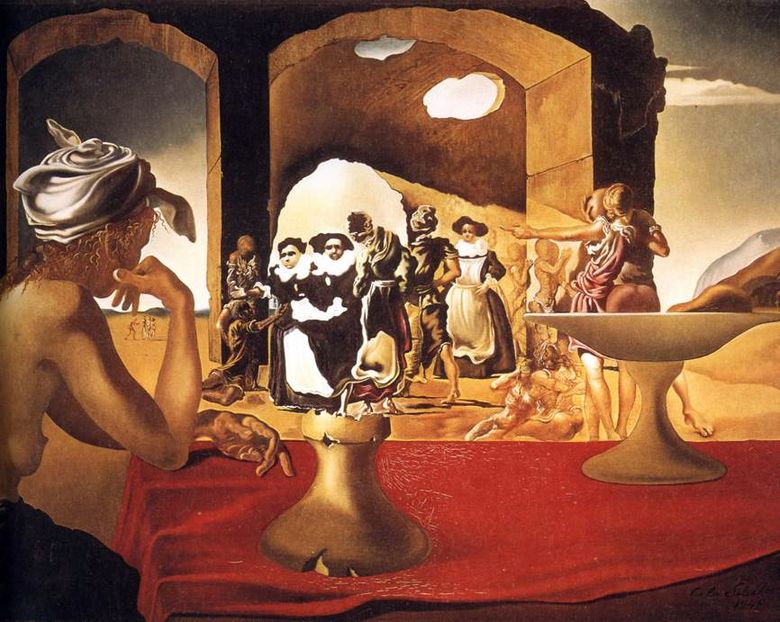 Marché du buste en danger de Walter – Salvador Dali
Marché du buste en danger de Walter – Salvador Dali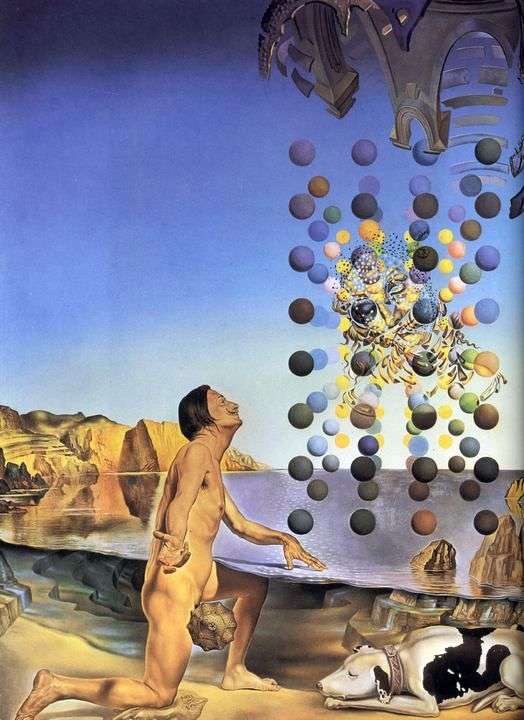 Naked Dali in front of five regular bodies by Salvador Dali
Naked Dali in front of five regular bodies by Salvador Dali Dali, turning his back, writes a portrait of Gala by Salvador Dali
Dali, turning his back, writes a portrait of Gala by Salvador Dali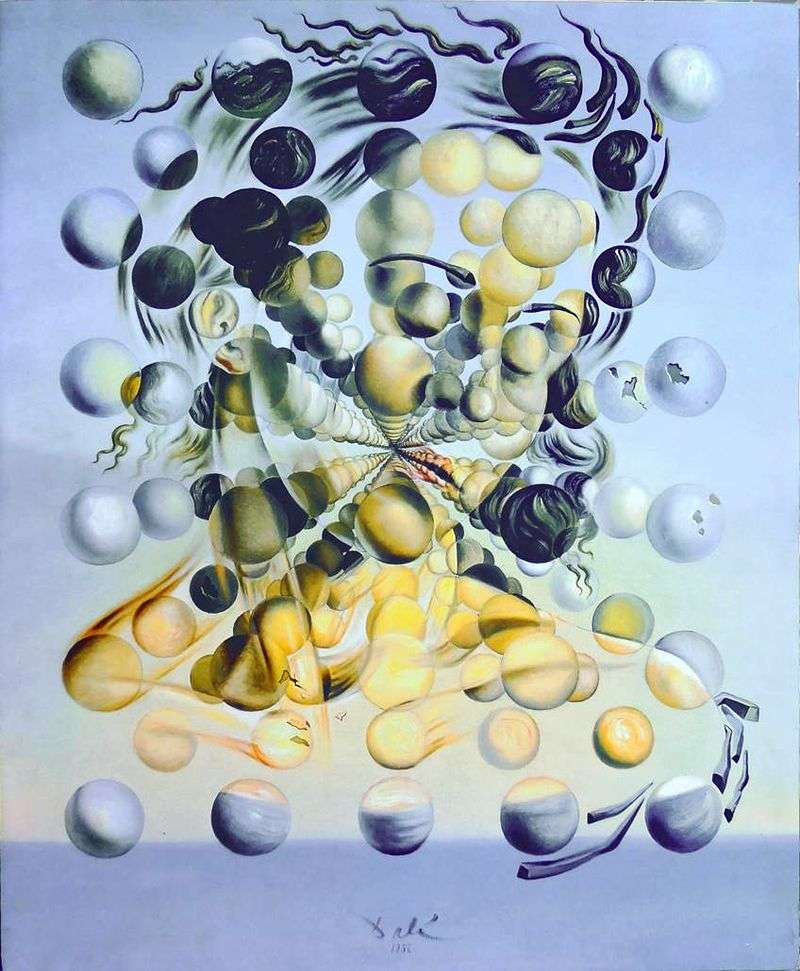 Galatea spheres by Salvador Dali
Galatea spheres by Salvador Dali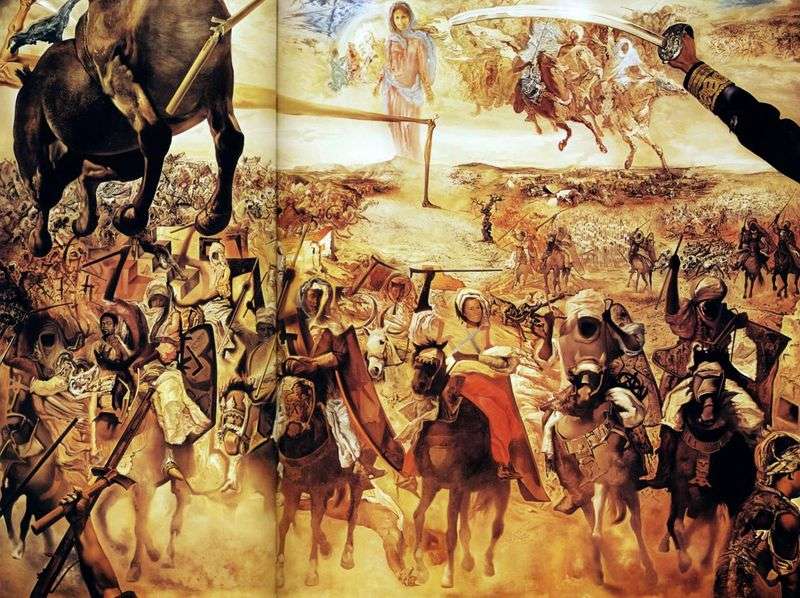 The Battle of Tetuan by Salvador Dali
The Battle of Tetuan by Salvador Dali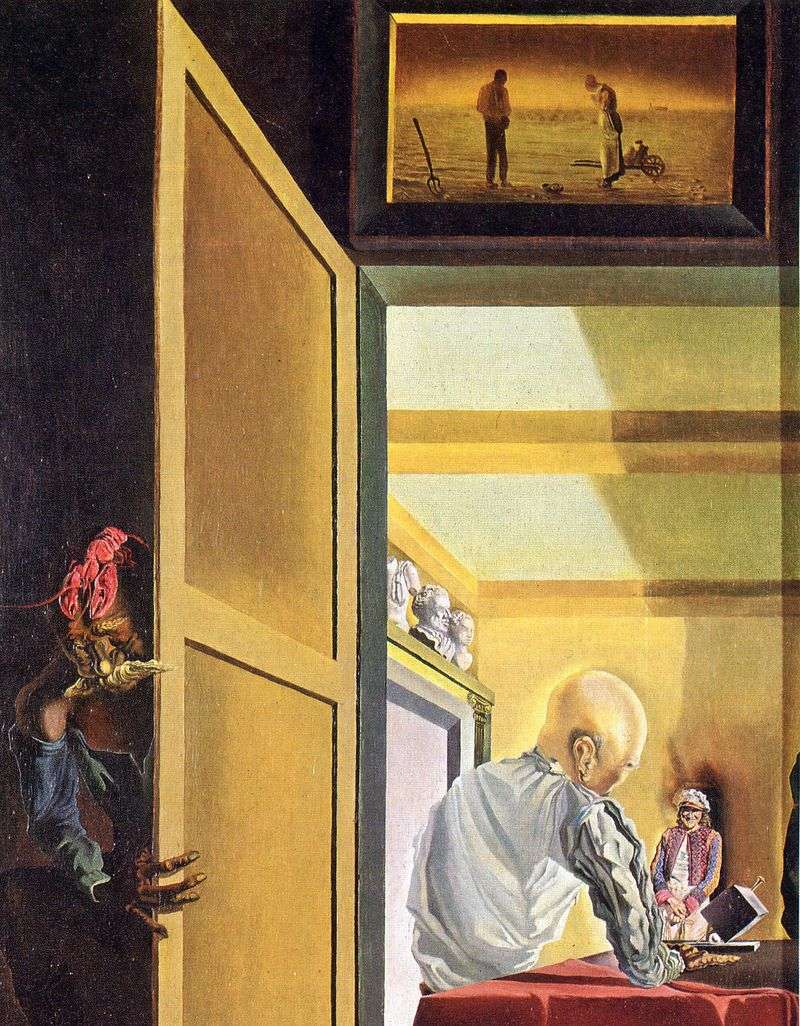 Gala and Angelis Millet just before the onset of conical anamorphosis by Salvador Dali
Gala and Angelis Millet just before the onset of conical anamorphosis by Salvador Dali Atomic Leda by Salvador Dali
Atomic Leda by Salvador Dali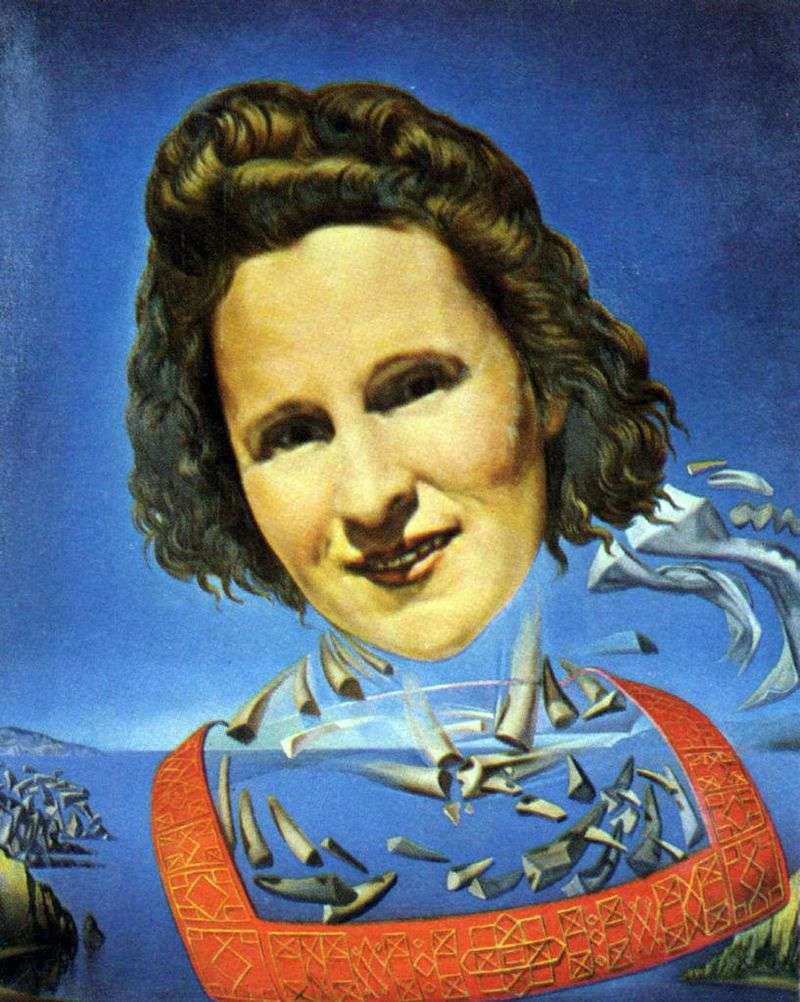 Portrait of Gala with tusks of rhinoceros by Salvador Dali
Portrait of Gala with tusks of rhinoceros by Salvador Dali